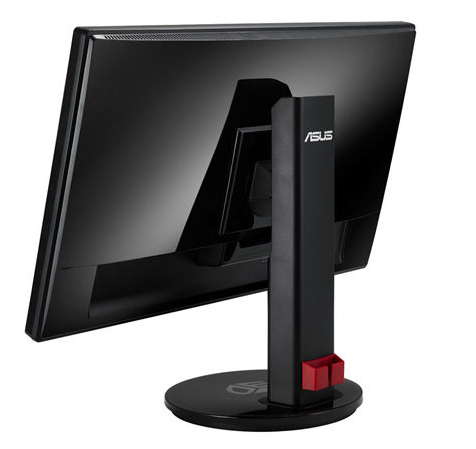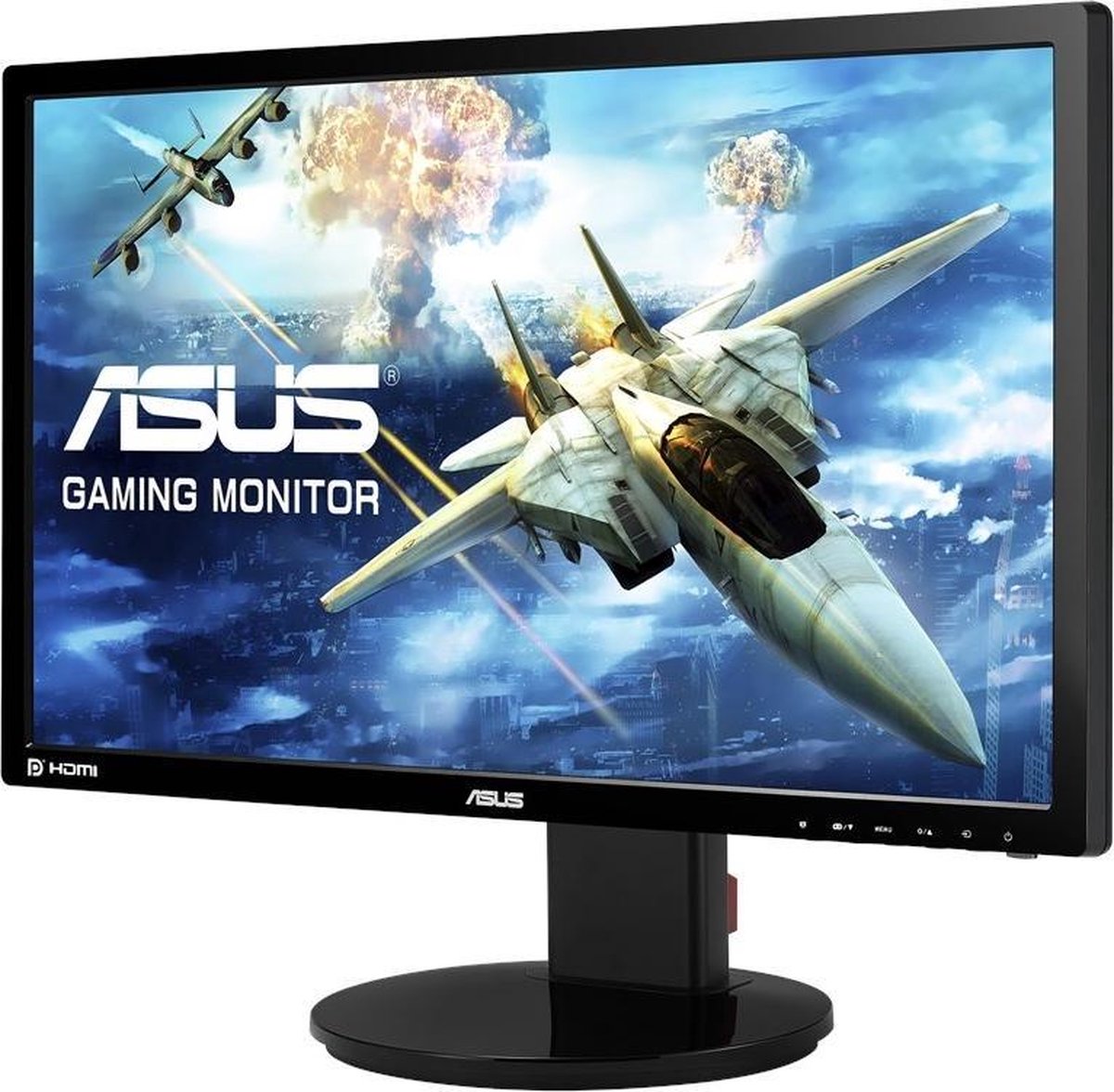

So if you are comfortable with a Philips screwdriver then soon you can purchase the G-Sync module itself and mod an ASUS VG248QE monitor at home. So if you pick up such a monitor and alongside can find the G-Sync module kit somewhere, you could mod it yourself. However, If you can't wait or already have this particular screen, G-SYNC modules will be finding their way to PC enthusiast who will install them into ASUS VG248QE monitors. Now please do understand that is a TN panel, early next year a wide varyity of G-SYNC monitors from ASUS, BenQ, Phillips and ViewSonic will be available direct from the shelves of retailers and e-tailers in several sizes, refresh rates and panels. This prototype monitor is stripped to the barebone, it only has a DisplayPort (1.2) connection and some fancy stickering - look at that - you go guuurl. The ASUS VG248QE monitor features a 144Hz rapid refresh rate for pretty darn smooth action based on a 80,000,000:1 contrast ratio and comes with a blazingly fast 1ms response time. So for an introductory article it will be sufficient of course, one nice advantage is that the monitor is 144 Hz capable, and as such we will test it at that (now maximum dynamic) refresh rate. So this TN screen might not be my favorite resolution or even panel type, but it is a fast little fracker. We should however see some pretty exciting announcements in Q1 of 2014, and let's hope there will be some Ultra HD announcements as well. Though that is a bit of a personal preference.
For GSYNC to take off, we do feel the resolution to be 2560x1440 (WHQD) and preferably IPS and LED based. This ASUS screen is a Full HD TN screen (1920x1080). Let me first state that the model we received is a non-final prototype when it comes to G-Sync, we however did not experienced problems despite it being a prototype (other then we had to manually correct gamma, contrast and brightness values). So we received a G-Sync capable monitor last week. Your driver is up to date - if you have a problem with your driver, you can try to re-install the old version as below. *: 2K=Windows 2000, 2K3= Windows 2003, XP= Windows XP, VISTA = Windows Vista, WIN7 = Windows 7 Watch this video to see how it works - click here If your driver isn't working, use the driver having the same OEM with the your laptop/desktop brand name. If you are looking for an update, pickup the latest one.

With the different devices, they can have the same driver, it's because they all use the same chip manufacturer.

Below is a list of drivers that may be suitable for your device.


 0 kommentar(er)
0 kommentar(er)
